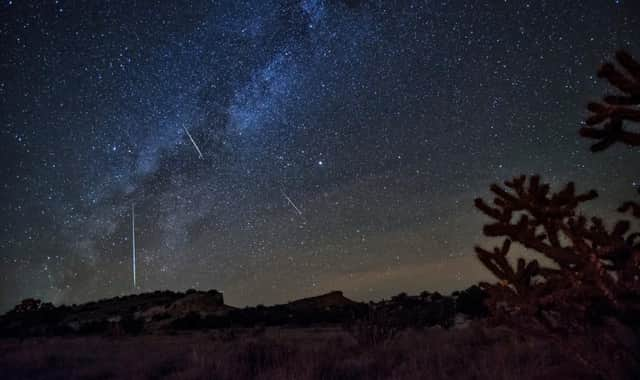Orionids Meteor Shower 2020: when it will peak in October – and how to watch the shooting stars display from the UK


Gaze upwards this week and - if the weather remains clear - you could be treated to up to 70 shooting stars an hour as the Earth intersects the orbit of Halley's Comet.
Here is everything you need to know about the spectacle.
What are the Orionids?
The Orionid Meteor shower is caused by dust from the tail of Halley's Comet burning up in the Earth's atmosphere, nearly 60 miles above our heads.
Advertisement
Hide AdAdvertisement
Hide AdWe haven't seen the comet itself since 1986, but our planet passes through its orbit twice a year, bringing the Orionids in October, and the Eta Aquarids in May.
The Orionids are so-called because they appear to originate in the same part of the sky as the constellation, Orion.
When is the best time to see them?
The meteors have actually been visible in the night sky from around 2 October, but they will peak in intensity on the evening of Wednesday 21 October and over the next few days.
For the best results, you might want to stay up a little later: the best viewing time is recommended as between midnight and dawn, and getting yourself to as dark a location as possible will increase your chances of spotting an Orionid.
Do I need a telescope?
Advertisement
Hide AdAdvertisement
Hide AdThankfully, budding stargazers need not splash out on expensive tech to see the Orionids; they will be visible with the naked eye.
You may need some patience though. While the shower has recorded up to 70 shooting stars an hour in previous years, those high intensity peaks are the exception, and the Orionids producers 20 – 25 meteors an hour.
That equates to roughly one every two and a half minutes, so it's best to get comfortable.
You'll also need to be alert, with the shooting stars zipping across the sky at an incredible 41 miles per second.
When will the next meteor shower be?
Advertisement
Hide AdAdvertisement
Hide AdDon't worry too much if you don't get outside or it's too cloudy where you live.
The next meteor shower visible from the UK will be the Leonids, reaching their peak across the evenings of November 17 and 18.
If you're after the Orionids specifically, you'll have to wait until October 21 of next year.
What else is happening in the skies?
The month of October has brought up a few treats for stargazers looking up; a bright Harvest Moon lit up the evening skies early in the month, and the Draconid meteor showier peaked on the evening of 8 October.
Advertisement
Hide AdAdvertisement
Hide AdBut the planet Mars is also in the sky throughout the month, making a rare close approach to Earth (though it’s still millions of miles away) and appearing brighter than it has done in 17 years.
To see it, look for an object that appears as a bright red "star" low in the eastern sky on any clear evening. Just after sunset darkness falls, you'll see a fiery source of yellowish orange light. That's Mars, the famous "Red Planet".
You shouldn’t miss it – the planet won’t be as bright again until 2035, and will appear even brighter than Jupiter, the largest planet in our Solar System. The planet will be in the night skies throughout October and even into November.
